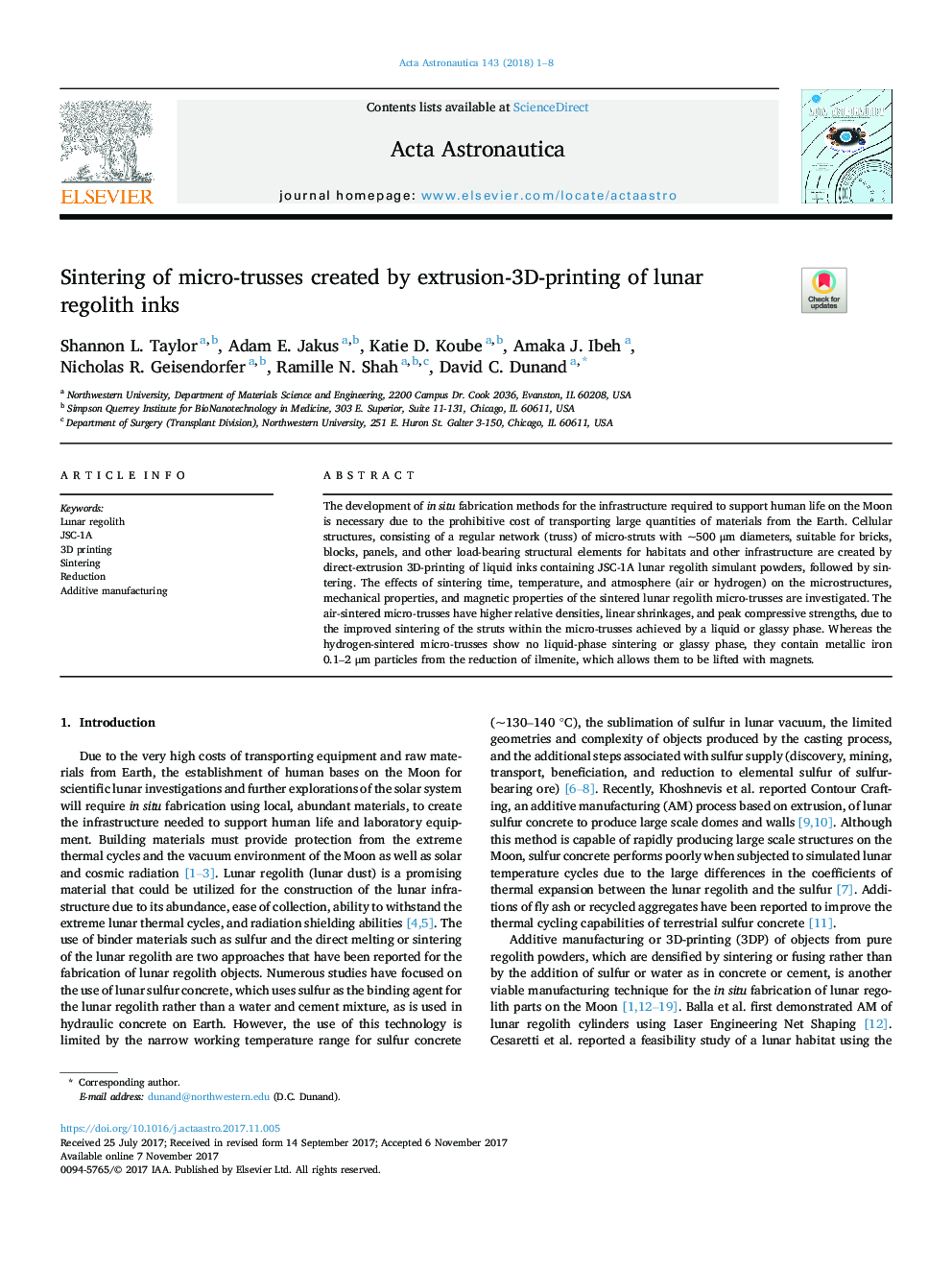| Article ID | Journal | Published Year | Pages | File Type |
|---|---|---|---|---|
| 8055750 | Acta Astronautica | 2018 | 8 Pages |
Abstract
The development of in situ fabrication methods for the infrastructure required to support human life on the Moon is necessary due to the prohibitive cost of transporting large quantities of materials from the Earth. Cellular structures, consisting of a regular network (truss) of micro-struts with â¼500 μm diameters, suitable for bricks, blocks, panels, and other load-bearing structural elements for habitats and other infrastructure are created by direct-extrusion 3D-printing of liquid inks containing JSC-1A lunar regolith simulant powders, followed by sintering. The effects of sintering time, temperature, and atmosphere (air or hydrogen) on the microstructures, mechanical properties, and magnetic properties of the sintered lunar regolith micro-trusses are investigated. The air-sintered micro-trusses have higher relative densities, linear shrinkages, and peak compressive strengths, due to the improved sintering of the struts within the micro-trusses achieved by a liquid or glassy phase. Whereas the hydrogen-sintered micro-trusses show no liquid-phase sintering or glassy phase, they contain metallic iron 0.1-2 μm particles from the reduction of ilmenite, which allows them to be lifted with magnets.
Related Topics
Physical Sciences and Engineering
Engineering
Aerospace Engineering
Authors
Shannon L. Taylor, Adam E. Jakus, Katie D. Koube, Amaka J. Ibeh, Nicholas R. Geisendorfer, Ramille N. Shah, David C. Dunand,
